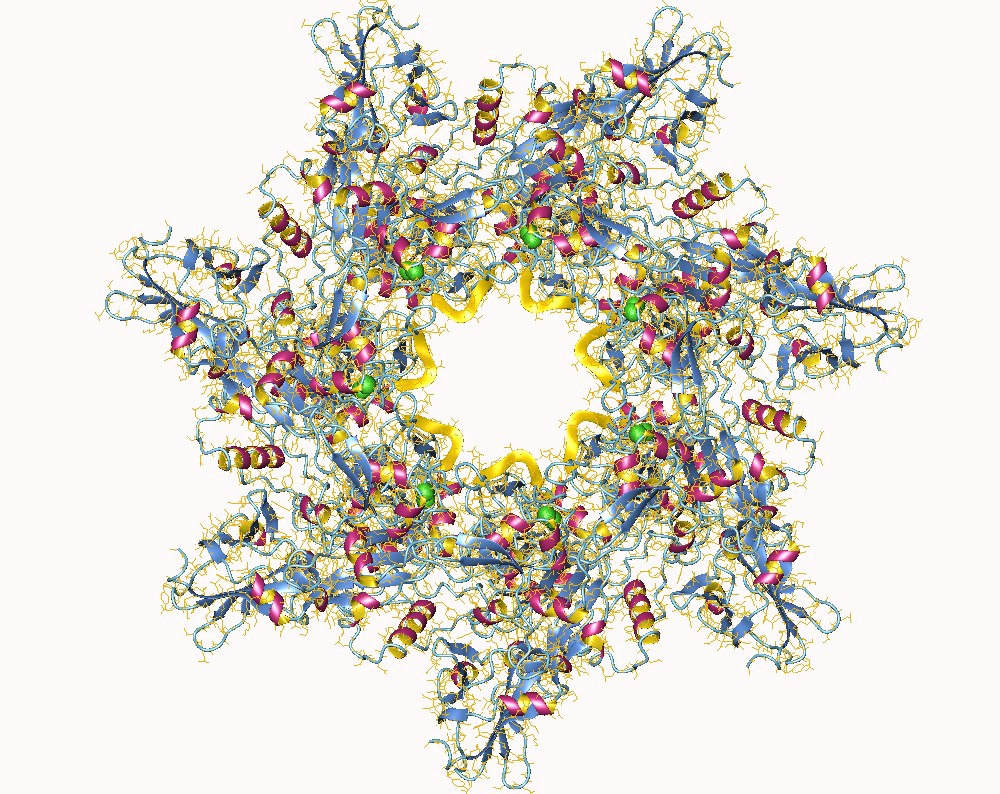|
Leon Cienkowski
 Lev Semyonovich Tsenkovsky (Leon Cienkowski, russian: Лев Семенович Ценковский) (October 1 (Old Style and New Style dates, N.S. October 13), 1822 in Warsaw – September 25 (N.S. October 7), 1887 in Leipzig) was a Poles, Polish botanist, protozoologist, bacteriologist, who was mostly active in Ukraine, then part of the Russian Empire. He was a corresponding member of the Saint Petersburg Academy of Sciences (1881).
Lev Tsenkovsky graduated from Saint Petersburg University in 1844. As a professor, he taught at the Demidov Lyceum in Yaroslavl (1850-1854), Saint Petersburg University, Novorossiysk University in Odessa (1865-1871), and Kharkov University (1872-1887). Lev Tsenkovsky was one of the pioneers of the ontogenetic method of studying lower ...
Lev Semyonovich Tsenkovsky (Leon Cienkowski, russian: Лев Семенович Ценковский) (October 1 (Old Style and New Style dates, N.S. October 13), 1822 in Warsaw – September 25 (N.S. October 7), 1887 in Leipzig) was a Poles, Polish botanist, protozoologist, bacteriologist, who was mostly active in Ukraine, then part of the Russian Empire. He was a corresponding member of the Saint Petersburg Academy of Sciences (1881).
Lev Tsenkovsky graduated from Saint Petersburg University in 1844. As a professor, he taught at the Demidov Lyceum in Yaroslavl (1850-1854), Saint Petersburg University, Novorossiysk University in Odessa (1865-1871), and Kharkov University (1872-1887). Lev Tsenkovsky was one of the pioneers of the ontogenetic method of studying lower ...
[...More Info...] [...Related Items...] OR: [Wikipedia] [Google] [Baidu] |
Kharkov University
The Kharkiv University or Karazin University ( uk, Каразінський університет), or officially V. N. Karazin Kharkiv National University ( uk, Харківський національний університет імені В. Н. Каразіна), is one of the major universities in Ukraine, and earlier in the Russian Empire and Soviet Union. It was founded in 1804 through the efforts of Vasily Karazin becoming the second oldest university in modern-day Ukraine. History Russian Empire On , the Decree on the Opening of the Imperial University in Kharkiv came into force. The university became the second university in the south of the Russian Empire. It was founded on the initiative of the local community with Vasily Karazin at the fore, whose idea was supported by the nobility and the local authorities. Count Seweryn Potocki was appointed the first supervisor of the university, the first rector being the philologist and philosopher Ivan Rizhsky. In 1811 ... [...More Info...] [...Related Items...] OR: [Wikipedia] [Google] [Baidu] |
Botanists From The Russian Empire
This is a list of botanists who have Wikipedia articles, in alphabetical order by surname. The List of botanists by author abbreviation is mostly a list of plant taxonomists because an author receives a standard abbreviation only when that author originates a new plant name. Botany is one of the few sciences which can boast, since the Middle Ages, of a substantial participation by women. A *Erik Acharius *Julián Acuña Galé *Johann Friedrich Adam *Carl Adolph Agardh *Jacob Georg Agardh *Nikolaus Ager *William Aiton *Frédéric-Louis Allamand *Carlo Allioni *Prospero Alpini * Benjamin Alvord *Adeline Ames *Eliza Frances Andrews *Agnes Arber *Giovanni Arcangeli *David Ashton *William Guybon Atherstone *Anna Atkins * Daniel E. Atha *Armen Takhtajan B * Ernest Brown Babcock *Churchill Babington *Curt Backeberg *James Eustace Bagnall *Jacob Whitman Bailey *Liberty Hyde Bailey *Ibn al-Baitar *Giovanni Battista Balbis *John Hutton Balfour *Joseph Banks *César Barbosa *B ... [...More Info...] [...Related Items...] OR: [Wikipedia] [Google] [Baidu] |
19th-century Polish Botanists
The 19th (nineteenth) century began on 1 January 1801 ( MDCCCI), and ended on 31 December 1900 ( MCM). The 19th century was the ninth century of the 2nd millennium. The 19th century was characterized by vast social upheaval. Slavery was abolished in much of Europe and the Americas. The First Industrial Revolution, though it began in the late 18th century, expanding beyond its British homeland for the first time during this century, particularly remaking the economies and societies of the Low Countries, the Rhineland, Northern Italy, and the Northeastern United States. A few decades later, the Second Industrial Revolution led to ever more massive urbanization and much higher levels of productivity, profit, and prosperity, a pattern that continued into the 20th century. The Islamic gunpowder empires fell into decline and European imperialism brought much of South Asia, Southeast Asia, and almost all of Africa under colonial rule. It was also marked by the collapse of the large S ... [...More Info...] [...Related Items...] OR: [Wikipedia] [Google] [Baidu] |
1887 Deaths
Events January–March * January 11 – Louis Pasteur's anti-rabies treatment is defended in the Académie Nationale de Médecine, by Dr. Joseph Grancher. * January 20 ** The United States Senate allows the Navy to lease Pearl Harbor as a naval base. ** British emigrant ship ''Kapunda'' sinks after a collision off the coast of Brazil, killing 303 with only 16 survivors. * January 21 ** The Amateur Athletic Union (AAU) is formed in the United States. ** Brisbane receives a one-day rainfall of (a record for any Australian capital city). * January 24 – Battle of Dogali: Abyssinian troops defeat the Italians. * January 28 ** In a snowstorm at Fort Keogh, Montana, the largest snowflakes on record are reported. They are wide and thick. ** Construction work begins on the foundations of the Eiffel Tower in Paris, France. * February 2 – The first Groundhog Day is observed in Punxsutawney, Pennsylvania. * February 4 – The Interstate Commerce Act ... [...More Info...] [...Related Items...] OR: [Wikipedia] [Google] [Baidu] |
1822 Births
Eighteen or 18 may refer to: * 18 (number), the natural number following 17 and preceding 19 * one of the years 18 BC, AD 18, 1918, 2018 Film, television and entertainment * ''18'' (film), a 1993 Taiwanese experimental film based on the short story ''God's Dice'' * ''Eighteen'' (film), a 2005 Canadian dramatic feature film * 18 (British Board of Film Classification), a film rating in the United Kingdom, also used in Ireland by the Irish Film Classification Office * 18 (''Dragon Ball''), a character in the ''Dragon Ball'' franchise * "Eighteen", a 2006 episode of the animated television series ''12 oz. Mouse'' Music Albums * ''18'' (Moby album), 2002 * ''18'' (Nana Kitade album), 2005 * '' 18...'', 2009 debut album by G.E.M. Songs * "18" (5 Seconds of Summer song), from their 2014 eponymous debut album * "18" (One Direction song), from their 2014 studio album ''Four'' * "18", by Anarbor from their 2013 studio album '' Burnout'' * "I'm Eighteen", by Alice Cooper common ... [...More Info...] [...Related Items...] OR: [Wikipedia] [Google] [Baidu] |
Kharkov
Kharkiv ( uk, Ха́рків, ), also known as Kharkov (russian: Харькoв, ), is the second-largest city and municipality in Ukraine.Kharkiv "never had eastern-western conflicts" '''' (23 October 2014) Located in the northeast of the country, it is the largest city of the historic region. Kharkiv is the of |
Vaccination
Vaccination is the administration of a vaccine to help the immune system develop immunity from a disease. Vaccines contain a microorganism or virus in a weakened, live or killed state, or proteins or toxins from the organism. In stimulating the body's adaptive immunity, they help prevent sickness from an infectious disease. When a sufficiently large percentage of a population has been vaccinated, herd immunity results. Herd immunity protects those who may be immunocompromised and cannot get a vaccine because even a weakened version would harm them. The effectiveness of vaccination has been widely studied and verified. Vaccination is the most effective method of preventing infectious diseases; widespread immunity due to vaccination is largely responsible for the worldwide eradication of smallpox and the elimination of diseases such as polio and tetanus from much of the world. However, some diseases, such as measles outbreaks in America, have seen rising cases due to relative ... [...More Info...] [...Related Items...] OR: [Wikipedia] [Google] [Baidu] |
Anthrax Vaccine
Anthrax vaccines are vaccines to prevent the livestock and human disease anthrax, caused by the bacterium ''Bacillus anthracis''. They have had a prominent place in the history of medicine, from Pasteur's pioneering 19th-century work with cattle (the first effective bacterial vaccine and the second effective vaccine ever) to the controversial late 20th century use of a modern product to protect American troops against the use of anthrax in biological warfare. Human anthrax vaccines were developed by the Soviet Union in the late 1930s and in the US and UK in the 1950s. The current vaccine approved by the U.S. Food and Drug Administration (FDA) was formulated in the 1960s. Currently administered human anthrax vaccines include acellular (USA, UK) and live spore (Russia) varieties. All currently used anthrax vaccines show considerable local and general reactogenicity (erythema, induration, soreness, fever) and serious adverse reactions occur in about 1% of recipients. New third ... [...More Info...] [...Related Items...] OR: [Wikipedia] [Google] [Baidu] |
Charles Darwin
Charles Robert Darwin ( ; 12 February 1809 – 19 April 1882) was an English naturalist, geologist, and biologist, widely known for his contributions to evolutionary biology. His proposition that all species of life have descended from a common ancestor is now generally accepted and considered a fundamental concept in science. In a joint publication with Alfred Russel Wallace, he introduced his scientific theory that this branching pattern of evolution resulted from a process he called natural selection, in which the struggle for existence has a similar effect to the artificial selection involved in selective breeding. Darwin has been described as one of the most influential figures in human history and was honoured by burial in Westminster Abbey. Darwin's early interest in nature led him to neglect his medical education at the University of Edinburgh; instead, he helped to investigate marine invertebrates. His studies at the University of Cambridge's Christ's Col ... [...More Info...] [...Related Items...] OR: [Wikipedia] [Google] [Baidu] |
Fauna
Fauna is all of the animal life present in a particular region or time. The corresponding term for plants is ''flora'', and for fungi, it is '' funga''. Flora, fauna, funga and other forms of life are collectively referred to as '' biota''. Zoologists and paleontologists use ''fauna'' to refer to a typical collection of animals found in a specific time or place, e.g. the "Sonoran Desert fauna" or the "Burgess Shale fauna". Paleontologists sometimes refer to a sequence of faunal stages, which is a series of rocks all containing similar fossils. The study of animals of a particular region is called faunistics. Etymology ''Fauna'' comes from the name Fauna, a Roman goddess of earth and fertility, the Roman god Faunus, and the related forest spirits called Fauns. All three words are cognates of the name of the Greek god Pan, and ''panis'' is the Greek equivalent of fauna. ''Fauna'' is also the word for a book that catalogues the animals in such a manner. The term was first used b ... [...More Info...] [...Related Items...] OR: [Wikipedia] [Google] [Baidu] |
Flora
Flora is all the plant life present in a particular region or time, generally the naturally occurring (indigenous) native plants. Sometimes bacteria and fungi are also referred to as flora, as in the terms '' gut flora'' or '' skin flora''. Etymology The word "flora" comes from the Latin name of Flora, the goddess of plants, flowers, and fertility in Roman mythology. The technical term "flora" is then derived from a metonymy of this goddess at the end of the sixteenth century. It was first used in poetry to denote the natural vegetation of an area, but soon also assumed the meaning of a work cataloguing such vegetation. Moreover, "Flora" was used to refer to the flowers of an artificial garden in the seventeenth century. The distinction between vegetation (the general appearance of a community) and flora (the taxonomic composition of a community) was first made by Jules Thurmann (1849). Prior to this, the two terms were used indiscriminately.Thurmann, J. (1849). ''Essai de ... [...More Info...] [...Related Items...] OR: [Wikipedia] [Google] [Baidu] |
.jpg)







